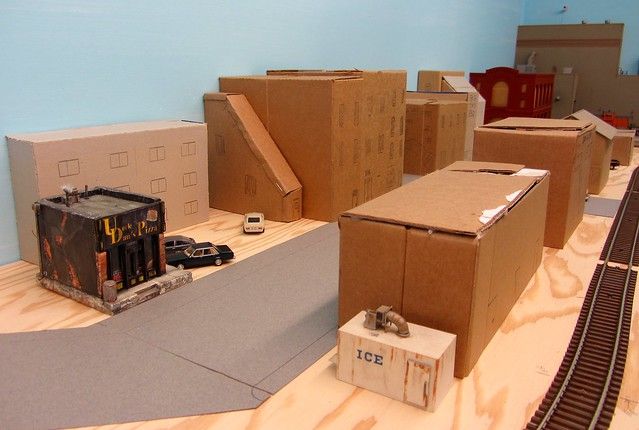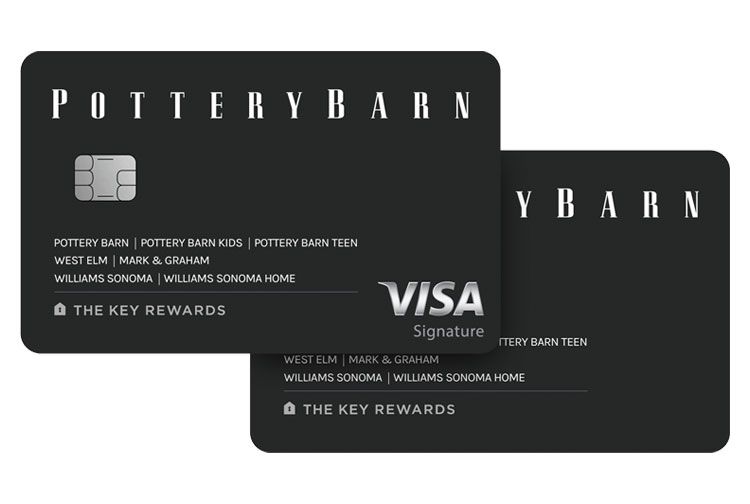What Is A Good Size Ho Train Layout?
HO scale model trains are 1:87 scale miniature replicas of real trains that run on model railway layouts. HO is the most popular model train scale in the world, with a huge variety of products and accessories available. The HO scale was introduced in the 1950s as smaller and more affordable alternative to O scale trains. Since then, HO scale has grown to dominate the model railroading hobby.
For many model railroaders, a key consideration in building a HO layout is determining the right size and space requirements. HO train layouts can range from small 4×8 foot designs to huge basement-filling empires. The size of the layout can impact the complexity of track plans, scenery, and number of trains that can run. This article will provide an overview of the space considerations, popular layout sizes, and shape options for building a fun and satisfying HO scale model train layout.
Space Considerations
Modeltrainforum.com recommends considering your available space when deciding on a layout size. HO scale models run on track with a minimum recommended radius of 18 inches. For a continuous loop, the minimum space is about 4 feet x 8 feet (48 square feet). This allows for a single oval track with very little scenery or accessories.
Many hobbyists recommend a minimum of 80-100 square feet for an HO layout. This allows you to incorporate switches, sidings, and basic scenery like buildings or hills. With 100+ square feet, you can create more complex or folded layouts. This additional space provides room for details like stations, rail yards, and background scenery. Always factor in the extra peripheral space needed around the edges for reaching across the layout.
According to cs.trains.com, larger layouts over 200 square feet open up more possibilities for creating scale scenes, longer runs, and operating multiple trains. A space this size allows you to replicate entire towns or rail lines with realistic details. Just keep in mind that larger layouts require more planning and time to construct. Align the layout size with the space you have available for the most realistic experiences.
Small Layouts
Small HO train layouts are typically 4×8 or 2×6 feet in dimensions. These compact sizes make them well-suited for small spaces, apartments, man caves, spare bedrooms, and attics. Some of the advantages of a small layout include:
- Require less space and smaller budget
- Easier to build for beginners
- Can be portable or modular
Some disadvantages may include fewer track options, less detailed scenery, and limited train operation capabilities. But small layouts can still create interesting track plans and realistic scenes in a tight space.
There are many examples of great small HO layout designs. ModelTrainStuff offers various 4×8 HO track plans like a simple oval with yard and industry sidings or more complex folded dogbone layouts (http://www.scarm.info/layouts/track_plans.php?size=S&scale=HO). John Armstrong designed creative and efficient track plans for 2×4 feet HO layouts, like Point of Interest with switching puzzles (http://www.scarm.info/layouts/track_plans.php?size=S&scale=HO). Small layouts allow modelers to create detailed scenes and operations in a confined space.
Medium Layouts
Medium-sized HO train layouts typically range from about 6×10 feet up to 8×12 feet. This provides enough space for more detailed scenery and trackwork while still being practical for most spare rooms or basements.
The benefits of a medium layout include:
- Room for multiple main lines, yards, and sidings
- Space for structures, mountains, tunnels, bridges, and other scenery
- Ability to model a small town or district of a larger city
- Provides a good balance between detail and practical space requirements
Here are some sample track plans for medium-sized layouts:
6×10 Foot Layout
This L-shaped layout fits nicely in a 6×10 space. It includes a double-track main line with passing sidings, a yard, and branch lines. There is room for a small town scene along one wall.
8×10 Foot Layout
Making use of the full 8×10 space, this layout has an outer loop, inner loop, and yard. The sweeping curves and long straightaways allow for continuous running of long trains. Scenery can depict rural farmlands.
L-Shaped 8×12 Foot Layout
The L-shape maximizes the space in this room. It features a double-track main and branch lines serving industries. The urban area in the corner has streets, buildings, and a rail yard. Extra space allows for detailed scenery.
Large Layouts
Large HO scale layouts typically measure 8×12 feet or larger. These big layouts allow modelers to create highly detailed and sprawling track plans with multiple scenes, long runs, and switching opportunities. Some of the advantages of building a large HO layout include:
- Having enough space for complex trackwork and challenging operations
- Modeling a greater variety of landscapes, settings, and track arrangements
- Accommodating multiple trains running at once
- Constructing large stations, yards, and structures
- Adding detailed scenery and background elements
Some examples of impressive large HO layouts include the Hamburg Railyard (http://l.hamropatro.com/http%3A%2F%2Ftravinspire.com/vr724hexrk.htm) which measures 30×70 feet and recreates a huge 1950s yard, and the Massoth Central Railroad (http://l.hamropatro.com/http%3A%2F%2Ftravinspire.com/vr724hexrk.htm) spanning 2500 square feet. For modelers with ample space, a large layout provides the ultimate HO modeling experience.
Modular Layouts
Modular layouts are made up of multiple independent sections, often called “modules”, that can be connected together in various configurations. This offers a high degree of flexibility and customization for model railroaders.
Each module is a small, self-contained layout segment built to specific dimensions. The most common modular standard is NMRA (National Model Railroad Association) which specifies module sizes of 2 feet by 4 feet. When connected, the modules must align properly at the joints so the track connects across modules. This is achieved by using standardized connecting plates on the module ends.
One major benefit of a modular layout is the ability to reconfigure it in different ways. Modelers can experiment with various track plans and scenes by rearranging the modules. Sections can also be added or removed as desired over time. This incremental growth makes starting with a small modular layout an approachable way to get into the hobby.
Additionally, modular layouts facilitate collaboration and socialization. Model railroad clubs often construct modular layouts that dozens of members contribute modules to. At train shows, these large modular layouts allow many hobbyists to operate trains together and interact with the public.
For examples of model railroad modular concepts and standards, see: Modular – Reading Railroad Heritage Museum
Layout Shape Considerations
When planning your HO scale model train layout, consider the shape and how it utilizes your available space. Popular layout shapes include:
- Linear – A simple point-to-point layout along one wall. This maximizes continuous run length in a smaller space.
- L-shaped – The L shape fits well in a corner, using two adjacent walls. It allows for switching opportunities and continuous running. L-shaped examples.
- U-shaped – U shapes maximize use of space in a room. Trains can travel around the layout with switching areas in the “arms” of the U.
- Custom – Take advantage of unique spaces by customizing the shape, such as a squarish dogbone with switching at both ends.
Consider how these shapes make efficient use of your available space. Account for needed aisle space to comfortably reach across the layout’s width and depth. An L shape or U shape can be accessed from multiple sides.
Also factor in where you want yards, switching opportunities, continuous running, and scenic spots. This will guide you in determining the ideal layout shape and dimensions.
Planning the Layout
When planning a HO train layout, there are some key design considerations to keep in mind. According to the blog T&K Hobby, some of the main elements in designing a layout include planning for continuous running and switching capabilities (https://tandkhobby.com/blog/5-essentials-of-designing-your-model-train-layout/). Continuous running allows trains to circle the entire layout while switching enables trains to move between tracks and service different industries or destinations.

There are a variety of software options available to help plan and design a HO train layout. Programs like AnyRail or SCARM allow hobbyists to lay out track plans and test them virtually. These tools make it easy to experiment with different layout shapes and track arrangements before committing to a final design.
Many experts also recommend building a simple cardboard or wooden mockup of your planned layout. As the website Domburg Train Support explains, this allows you to test if your design will actually work as expected (https://domburgtrainsupport.nl/en/modelbaan-ontwerpen/). Running trains on a mock layout can reveal any issues or improvements needed before constructing the actual model train layout.
Adding Details
One of the best parts of building a model train layout is adding structures, landscapes, and accessories to enhance the layout and create realistic or imaginative scenes. These details truly bring a layout to life. Some popular details to consider adding include:
- Structures like stations, houses, businesses, bridges, tunnels
- Landscaping elements like trees, bushes, grass, lakes, rivers, hills
- Accessories like vehicles, people, streetlights, signals, billboards
The right details will depend on if you want a realistic modern layout or a more imaginative fanciful one. Budget is often a factor as well – quality kits and handmade items can get quite pricey. Luckily there are options at every price point. Beginners may want to start with inexpensive plastic structure kits and paper or foam scenery. As skills grow, consider investing in higher detail resin kits, photo backdrops, and realistic vegetation and scatters.
When adding details, strive for a cohesive look and well-balanced scenes. Focus on one area at a time instead of scattering pieces randomly. And remember less is often more – don’t overcrowd the layout. Well-placed high quality pieces can make more visual impact than dozens of cheap details.
With some creativity and strategic choices, modellers can build highly detailed HO layouts on any budget. The key is choosing pieces that are suited to the setting and layout’s story, while staying within financial means. Adding thoughtful details is one of the most rewarding parts of the model railroading hobby.
Sources:
https://www.hobbylinc.com/model-railroad-scenery
https://www.trainsetsonly.com/ho-scale-scenery.html
Conclusion
Selecting the right size for your HO train layout involves carefully considering the space you have available, the type of layout you want to build, and how much detail you plan to include. The key factors are the physical dimensions of your space, whether you want a continuous run or point-to-point design, the track configurations and types of scenery you’d like to model, and your budget. Smaller layouts like a 4×8 are great for beginners and tight spaces, while larger layouts allow more creative freedom. Modular and shelf layouts can maximize limited areas. Careful planning is needed to get the most satisfaction from your layout.
There are many additional resources available to help with planning and constructing your HO layout:
- Model railroad books and magazines like Model Railroader provide track plans, tips, and inspiration.
- Model railroad clubs and conventions let you see layouts firsthand and connect with experienced modelers.
- Online forums like those at ModelTrainForum.com allow you to get feedback on your plans.
- Manufacturer websites offer product specifications, instructions, and idea galleries.
With thoughtful design and helpful resources, you can build the HO layout of your dreams, no matter the size.





